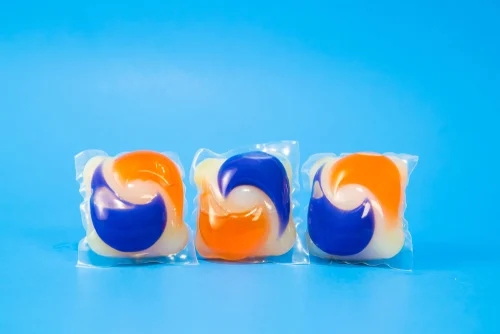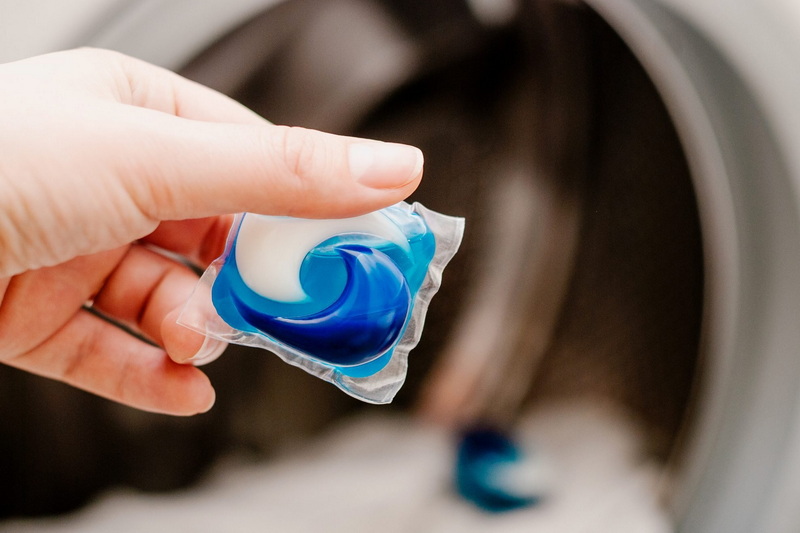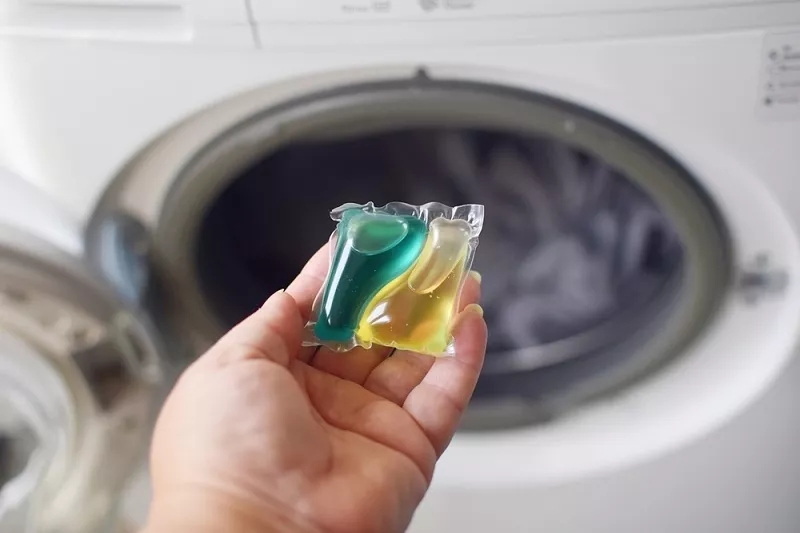Dongguan UFine Daily Chemical Co.,Ltd.
- All
- Product Name
- Product Keyword
- Product Model
- Product Summary
- Product Description
- Multi Field Search
Views: 222 Author: Tomorrow Publish Time: 10-16-2025 Origin: Site











Content Menu
>> Composition of Laundry Pods
● Why Laundry Pods Are Dangerous If Eaten
>> Health Risks From Ingesting Laundry Pods
>> Statistics on Pod Poisoning Incidents
● Reasons People Accidentally Eat Laundry Pods
>> Attractive Appearance and Packaging
● Safety Tips to Prevent Laundry Pod Ingestion
● What to Do If Someone Eats a Laundry Pod
● The Role of Manufacturers and Policymakers
● Impact of Social Media on Laundry Pod Safety
● Educating Children About Laundry Pod Safety
● Summary of Laundry Pod Safety Measures
● FAQ
>> 1. What should I do if my child eats a laundry pod?
>> 2. Are laundry pods dangerous for pets?
>> 3. How can I store laundry pods safely?
>> 4. Can laundry pods cause choking?
>> 5. Why do teens eat laundry pods despite the risks?
Laundry pods have become a common household item due to their convenience and efficiency in laundry care. These small, colorful packets contain highly concentrated detergents that clean clothes effectively. However, despite their practical use, laundry pods pose significant risks, especially if ingested. The catchy yet dangerous phrase “Don't Eat The Laundry Pods” highlights the critical safety message that must be communicated to households worldwide. This article explores what laundry pods are, the dangers associated with ingesting them, reasons behind accidental consumption, safety tips for preventing harm, and what to do in cases of exposure.

Laundry pods, also known as detergent pods or capsules, are single-use packets filled with liquid or gel detergent. They are designed to dissolve in water during washing, releasing powerful cleaning agents that remove dirt, grease, and stains from clothing. Their main advantages include ease of use, mess-free handling, and pre-measured amounts of detergent that reduce waste.
Typically, laundry pods contain a mix of:
- Surfactants that break down oils and grime.
- Enzymes that target stains.
- Polymers to prevent soil from redepositing.
- Fragrances and dyes for fresh-smelling clothes.
- Chemicals like hydrogen peroxide or other bleaching agents.
The pods are encased in a water-soluble film, usually made of polyvinyl alcohol, which dissolves quickly in a washing machine or sink.
Laundry pods are safe for washing clothes but highly dangerous if ingested. The concentrated detergent inside can cause severe toxicity, chemical burns, and choking hazards. Accidental ingestion affects mainly children, but there have been cases involving teenagers and adults due to curiosity or misinformation.
The potential health complications include:
- Poisoning: The detergents contain harmful chemicals that become toxic in the stomach.
- Chemical Burns: The concentrated formula can burn the mouth, throat, esophagus, and stomach lining.
- Choking and Aspiration: The pod's shape and size can block airways, leading to breathing difficulties or pneumonia if detergent enters the lungs.
- Neurological Effects: Some cases have reported seizures or loss of consciousness due to poisoning.
- Gastrointestinal Symptoms: Vomiting, pain, diarrhea, and difficulty swallowing.
Poison control centers report thousands of cases annually related to laundry pod ingestion, with young children under five being the most vulnerable group. The trend has prompted health regulators and manufacturers to issue warnings and redesign packaging for safety.
Understanding why people, especially children, ingest laundry pods is key to prevention.
Laundry pods resemble candy due to their bright colors and squishy texture. Children's natural curiosity makes them prone to picking up and putting pods in their mouths.
Pods left within reach in unlocked cabinets or on countertops provide easy access to children and even pets.
Some caregivers underestimate the danger, treating pods like regular detergents. Teens may experiment with pods due to social media trends, adding another layer of risk.
Preventing accidental ingestion requires proactive steps:
- Store laundry pods out of reach and sight of children.
- Use child-proof containers and lids.
- Educate family members about the dangers.
- Avoid transferring pods to other containers that may mislead children into thinking they are toys or food.
- Supervise children around laundry areas.
- Dispose of empty pods and packaging securely.
- Encourage manufacturers and retailers to use clear warning labels and more child-resistant packaging.

Immediate action can save lives in ingestion cases:
1. Stay calm and remove any remaining pod material from the mouth.
2. Do not induce vomiting as it can worsen chemical burns.
3. Call emergency services or poison control immediately.
4. Provide the operator with information about the pod brand, ingredients, and amount ingested.
5. Follow instructions carefully while waiting for professional help.
6. If the person shows difficulty breathing, severe pain, unconsciousness, or seizures, call 911 or emergency medical services right away.
Manufacturers and policymakers play a crucial part in reducing laundry pod risks. Many companies have responded to concerns by improving packaging with child-resistant caps, opaque containers, and clearer warning labels. Some have developed pods with less attractive colors and altered shapes to reduce temptation.
Government agencies also issue safety guidelines and conduct public awareness campaigns on pod dangers. Enforcement of strict labeling and packaging standards ensures compliance and protection for consumers.
Social media has influenced behaviors around laundry pods in unexpected ways. A few years ago, a dangerous online challenge encouraged teenagers to bite or eat pods, leading to multiple poisonings and hospitalizations. This "challenge" demonstrated how misinformation and peer pressure can override caution.
In response, many platforms banned such content, and health organizations used social media for spreading accurate safety information. Parents are encouraged to monitor their children's online activities and discuss the real dangers associated with laundry pods.
One of the most effective ways to prevent ingestion accidents is to educate children about household dangers. Parents and caregivers should explain in age-appropriate terms why pods are not food and can cause serious harm.
Using stories, role-playing, and clear instructions can reinforce understanding. Teaching children to ask for help before touching unknown items fosters safer behavior.
| Safety Measure | Description | Benefit |
|---|---|---|
| Secure Storage | Keep pods locked or out of reach | Reduces accidental access |
| Clear Labeling | Warning labels with hazard information | Raises awareness for all household members |
| Child-Resistant Packaging | Containers designed to be hard for children to open | Prevents accidental access |
| Education and Supervision | Engage children and supervise laundry areas | Encourages safe behavior and vigilance |
| Immediate Response Planning | Know emergency contacts and procedures | Ensures quick and appropriate action |
Laundry pods are a convenient and efficient laundry solution, but they carry serious risks if ingested. The phrase “Don't Eat The Laundry Pods” serves as a necessary warning to safeguard households, especially children. Understanding the dangers these products present, how accidental ingestion happens, and taking preventive measures are essential steps toward reducing poisoning incidents. When ingestion occurs, acting swiftly by seeking medical attention can prevent serious health outcomes. Safety education and responsible storage practices remain the best defenses against pod-related accidents in every home.

Immediately remove any pod remnants from the child's mouth. Do not make them vomit. Call poison control or emergency services and follow their instructions precisely.
Yes, laundry pods can be toxic to pets if ingested. Keep pods securely stored and seek veterinary help immediately if pet ingestion occurs.
Store pods in childproof containers, high cabinets, or locked storage. Avoid leaving them out in open containers or accessible areas.
Yes, the size and texture of pods can block airways and cause choking, which is a medical emergency requiring immediate attention.
Some teens follow internet challenges or dares involving laundry pods. Awareness campaigns and education about the dangers are critical to preventing such behavior.